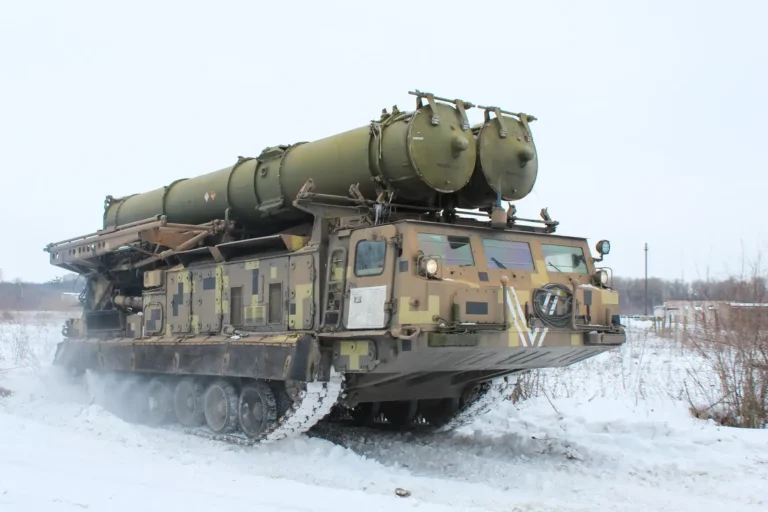Follow Us:

Share
Russia confirms Su-57 Export as the first overseas delivery of its Su-57 stealth fighter jet is set for 2025. This announcement, made by Alexander Mikheev, head of Rosoboronexport, during the Aero India 2025 defense exhibition, marks a significant milestone for Russia’s defense industry.
The Su-57E, the export variant of Russia’s fifth-generation fighter, has entered production for its inaugural foreign client. While the purchasing nation’s identity remained undisclosed initially, Algeria’s state-run media announced on February 12, 2025, that the country is the first export customer for the Su-57.
Algerian TV confirms Su-57 fighter jet deal with Russia.
— Clash Report (@clashreport) February 12, 2025
“Algerian pilots are training in Russia, and deliveries are expected this year.”
Algeria becomes the first Su-57 customer. pic.twitter.com/UGEgFvY92m
While this move appears to cement Russia’s ambitions as a leader in fifth-generation fighter technology, the reality is far more complex. Russia confirms Su-57 Export, but is this truly a breakthrough for its arms industry, or is Moscow merely trying to salvage a program plagued with setbacks and geopolitical hurdles?
For years, the Su-57 program has faced skepticism, delays, and accusations that it falls short of its Western counterparts, such as the American F-35 and F-22 Raptor. Developed by Sukhoi as Russia’s answer to the U.S. stealth fighter dominance, the Su-57 boasts impressive specs on paper—stealth capabilities, supermaneuverability, and an advanced sensor suite. Yet, it has struggled with production issues, engine failures, and questions about its true combat readiness.

The Su-57’s deployment in Syria was meant to be a demonstration of its prowess, but it was largely symbolic, with limited actual engagement. Some experts argue that Russia’s eagerness to export the Su-57 reflects an attempt to recoup the heavy costs associated with its development rather than a true sign of confidence in its battlefield capabilities.
Algeria’s reported acquisition of the Su-57E—the export variant—adds another layer of intrigue. A long-time customer of Russian military hardware, Algeria is no stranger to Russian aircraft, operating Su-30s, MiG-29s, and Su-24 bombers. However, the decision to invest in the Su-57E raises eyebrows.
For Algeria, this could be a calculated move to maintain regional military superiority, particularly against its North African rival, Morocco, which is increasingly aligning with Western defense suppliers. With Morocco eyeing advanced American F-35s, Algeria may see the Su-57E as a necessary countermeasure to avoid falling behind in aerial warfare capabilities.
But beyond mere military planning, Algeria’s move is also a political statement. By choosing Russian aircraft over Western options, Algeria reinforces its strategic alignment with Moscow. In doing so, it sends a message to NATO-aligned powers that its defense policy remains independent of Western influence, despite growing global pressure to distance itself from Russia in light of ongoing geopolitical tensions.
Russia’s arms exports have long been a crucial component of its foreign policy, and the Su-57E’s sale is no exception. With heavy Western sanctions limiting its economic reach, Russia is using its defense industry as a geopolitical tool. The sale of a fifth-generation stealth fighter to Algeria—especially at a time when tensions between Russia and the West are at an all-time high—illustrates Moscow’s determination to keep its global influence alive.
However, this deal comes with risks. Algeria, like other potential buyers, could face repercussions from the United States under the Countering America’s Adversaries Through Sanctions Act (CAATSA). Any nation purchasing significant Russian military hardware risks U.S. sanctions, which could impact Algeria’s economy and its ability to procure Western technology in other sectors.
There’s also the question of reliability. Russia’s ability to meet its defense production deadlines has been tested in recent years, particularly due to the ongoing war in Ukraine, which has placed immense strain on its military-industrial complex. If Moscow fails to deliver the Su-57E on time or to the promised specifications, it could damage Russia’s credibility in the global arms market.
The Su-57E’s first confirmed export sale marks a turning point for Russia’s defense sector. If the delivery is successful and the aircraft performs as advertised, it could open doors for further exports to countries like India, Vietnam, and the UAE, who have previously shown interest but remained hesitant due to concerns over the fighter’s reliability and geopolitical consequences.

On the other hand, if the Su-57E fails to live up to expectations, it could solidify the perception that Russia is struggling to compete with Western aerospace giants like Lockheed Martin and Northrop Grumman. Moreover, Russia’s insistence on keeping the buyer secret until now—only for Algeria to announce the deal—suggests that Moscow might not have been fully confident in the transaction’s finalization.
At first glance, the Su-57E’s export deal appears to be a major win for Russia. But a closer look reveals an arms industry struggling under sanctions, a buyer with its own geopolitical risks, and an aircraft with an uncertain reputation. Whether this sale represents a turning point for Russian military aviation or a desperate attempt to salvage an expensive program remains to be seen.
One thing is certain: this deal will be closely watched by defense analysts, military planners, and world leaders alike. If Russia can successfully position the Su-57E as a viable alternative to the F-35 in the global arms market, it could reshape the future of aerial warfare.
If not, it could mark yet another chapter in Russia’s long history of overpromised, under-delivered military projects. Either way, 2025 will be a decisive year for the Su-57 and Russia’s place in the high-stakes game of global arms competition.
Share
Defense Feeds is publication focusing on informing, engaging, and empowering the world by providing accurate information from defense technology.
Powered by Defense Feeds © 2025 – All rights reserved.